The Ten Worst Chrysler Vehicles of the Past 25 Years
For the Ten Best Chrysler Vehicles of the Past 25 Years, click here. These are in no particular order.
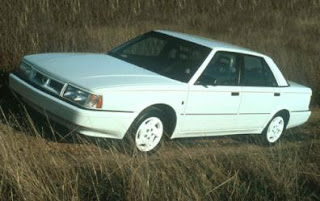 Eagle Premier (1998-1992)/Dodge Monaco (1990-1992)
Eagle Premier (1998-1992)/Dodge Monaco (1990-1992)
The Eagle Premier and its rebadged cousin the Dodge Monaco were developed by AMC and Renault prior to AMC’s purchase by Chrysler Corporation. It was a full size, FWD sedan styled by Giorgetto Giugiaro. The cars were unusual in that they had a longitudinal engine layout, which was later carried over to their successors, the Chrysler LH cars. The Premier was developed by AMC and Renault, was renamed “Eagle” following the merger, and launched shortly afterward. From all accounts, the cars were well-engineered and somewhat ahead of their time (more so than other contemporary Chrysler products), but they were prone to electrical problems and transmission issues. More importantly, they were sales duds – after selling over 40,000 units in the first two years, sales dropped off precipitously to a third of that, necessitating the re-badge called the Dodge Monaco. Combined, these two models topped out at 24,000 units in their best year together, and they were dropped in 1992. I can’t STAND their styling, either; they look like overgrown Renault Alliances. Like they were styled by a T-square only. These AMC relics did, however, eventually lead to the well-received cab-forward Chrysler LH cars of the early 1990s.
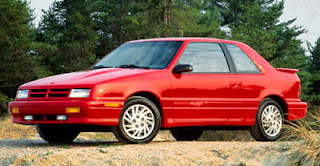 Dodge Shadow/Plymouth Sundance (1987-1994)
Dodge Shadow/Plymouth Sundance (1987-1994)
These were Chrysler’s compact cars immediately prior to the Neon. Like so many 1980s Chrysler products, they were a derivative of the K-car platform. They were cheap transportation (though more expensive than the Omni/Horizon that they ostensibly replaced). Chrysler kept churning these things out for years even though they lost money on them, just to help their CAFE numbers (sound familiar?) Toward the end of their life cycle, they were infused with a 3.0 liter Mitsubishi-sourced V6, but the cars were not mourned when the new “cab-forward” Neon hit the streets…
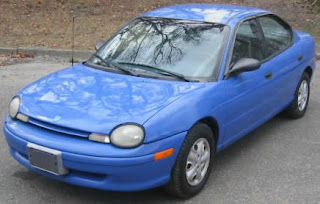 Dodge/Plymouth Neon (1995-1999)
Dodge/Plymouth Neon (1995-1999)
Who can forget the cute “Hi” advertising campaign that introduced the world to the Neon? The car promised more space inside than its competitors thanks to its cab forward architecture. It also had a more powerful engine lineup than nearly all of its contemporaries did, and had a successful early career in SCCA Solo Autocross. Unfortunately, cost cutting led to issues such as frequent head gasket failures (remedied in later first-gen models) and peeling paint in certain colored cars (who hasn’t seen a purple Neon with bare metal spots on the hood?) My dad (a used car dealer) has bought a handful of Neons over the years, and probably more than half of them have broken down on their way to the auction to sell. There were also very odd design compromises, such as rear windows that were hand-cranked even if the front windows were power, and frameless windows. The 2000 model introduced the second generation and improved refinement of the model, and is not as worthy of pointing at and laughing.
 Plymouth Acclaim/Dodge Spirit/Chrysler LeBaron (1989-1995)
Plymouth Acclaim/Dodge Spirit/Chrysler LeBaron (1989-1995)
This trio of boxes on wheels was Chrysler Corp’s midsize sedan offering of the early 1990s. While the rest of the world was moving to an aero look thanks to the Ford Taurus and Asian competition, Chrysler decided to go with a neo-Volvo look. The cars weren’t ugly, but they weren’t design leaders, either. Nor were they the engineering benchmarks of their day, as they rode on yet another K-car derivative platform (a full eight years after the first K-cars hit the streets). While the exterior theme was one of tasteful, if bland, rounded boxiness, the instrument panel’s theme was just boxiness. My aunt used to work for Chrysler Corporation in the early 1990s, and she once visited us in a rental Dodge Spirit. When we checked out her car, she said that the buzz around the company was that they were intended as an E-class Mercedes competitor. Mmm hmm. At least the cars that replaced them were better. The only car in this group that gets a pass is the Spirit R/T, which had a 224-horsepower, turbocharged/intercooled four banger that kicked ass and took names.
 Jeep Commander (2006-present)
Jeep Commander (2006-present)
The Jeep Commander is a half-assed attempt at a larger Jeep to compete with the (then) successful Hummer H2. Jeep was concerned that many of its competitors offered larger vehicles and would-be Jeep buyers would end up buying a competitive product instead. History is littered with management who tried to run with the cheapest way around a problem, and DCX management decided to rebody a Grand Cherokee, keeping the same wheelbase and optional powertrains, but with a larger, boxier body. The marketing message that buyers were supposed to get was that the Commander captured the style of the much-loved 1984-2001 Jeep Cherokee; the message that they got instead was that it looked like a caricature of that vehicle. Others called it the box that the Grand Cherokee came in. The result was an overstyled joke that was too big to handle itself as nimbly as a Grand Cherokee, and too small inside (particularly in the third row) to be a credible competitor to vehicles like the Pathfinder SE Off Road, Hummer H2, Chevy Tahoe, Ford Expedition, etc. It also suffers from the unimaginative Chrysler interiors of the mid-2000s with plenty of right angles and not enough quality materials. The Commander isn’t going to see a second generation.
 Dodge Aries/Plymouth Reliant (1981-1989)
Dodge Aries/Plymouth Reliant (1981-1989)
Ahh yes, the venerable K-cars. These suckers (laughably) may have saved Chrysler from bankruptcy in the early 1980s (thanks to their small exteriors, six-passenger interiors, and fuel efficient engines). Their platform eventually spawned nearly every front wheel drive Chrysler, Dodge, and Plymouth developed during the 1980s, including the minivans. That would be fine if it was a well-engineered starting point, but the K platform wasn’t state of the art and was the victim of cost cutting. It was also engineered to be lightweight for fuel economy reasons, and in a cheap car, lightweight does not mean exotic materials, it means thinner materials and de-contenting. Like the later Neon, these cars had head gasket problems with the ubiquitous 2.2 liter fours, and Chrysler’s attempt at marketing a Japanese engine in them (supplied by Mitsubishi as a 2.6 liter) backfired because those engines blew themselves up. They did sell more than a million units of these cars in a single (long) generation, but it’s a safe bet there weren’t a million happy owners. Oh, BTW, these cream puffs were the Motor Trend Car of the Year in 1981. These cars are also immortalized in song by the Barenaked Ladies in “If I Had a Million Dollars” with the line, “…I’d buy you a K-car, a nice Reliant automobile…” Funny, but somehow simultaneously repulsive.
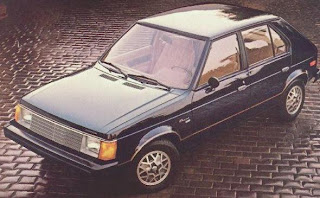 Dodge Omni/Plymouth Horizon (1978-1990)
Dodge Omni/Plymouth Horizon (1978-1990)
Yes – another MT COTY winner (1978!) These small cars were the first front wheel drive offerings by Chrysler Corporation designed to compete with the successful Volkswagen Rabbit. Imitation is the sincerest form of flattery, right? Because they look eerily similar to a Wabbit, and in fact early models even had VW-sourced engines under their hoods. The cars initially were poor handlers, so much so that Consumer Reports (yeah, I know…) rated it “not acceptable” because of the difficulty in handling the car in an emergency scenario. Toward the end of the car’s life, when it was about to be replaced by the larger and more expensive Shadow/Sundance, Chrysler standardized some optional equipment and called them “Omni USA” and “Horizon USA,” sales perked up to the extent that they were allowed to soldier on for a few more years. Whether this was a wise long-term decision is questionable. I remember riding in a friend’s Horizon in high school. The only thing I liked about it was that I didn’t have to ride the bus to go home.
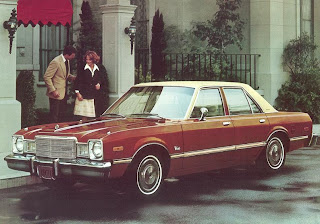 Dodge Aspen/Plymouth Volaré (1976-1980)
Dodge Aspen/Plymouth Volaré (1976-1980)
These cars were considered compacts at their launch, but times changed so much during their lifespan that they were considered midsize at the end. The lineup consisted of a coupe, sedan, and wagon. My favorite part about these cars is that Lee Iacocca admitted in his self-named autobiography that the cars were rushed to market, and first year customers were basically the last round of quality control. I’ll let you see it in his own words (page 169):
But the Aspen and Volaré simply weren’t well made. The engines would stall when you stepped on the gas. The brakes would fail. The hoods would fly open. Customers complained, and more than three and a half million cars were brought back to the dealers for free repairs–free to the customer, that is. Chrysler had to foot the bill.But then even cars that were mechanically sound started rusting. The Volaré’s rusted fender program cost us $109 million–in 1980, when we could ill afford it. The fenders had rusted through because somebody wasn’t paying enough attention to the process of rustproofing them. We weren’t asked to recall them, but we had an obligation to our customers to fix them. Even thoughwe stood behind them, the resale value of these cars plummeted, which hurt Chrysler’s image badly.
The results were predictably disastrous; as Iacocca alluded to above, Chrysler was teetering on the brink of bankruptcy, with its only hope for survival resting on loan guarantees from the federal government and keeping their fingers crossed for the K-car’s success. (Also, as a side note, two pages after his Volaré description, Iacocca talks about the sales banks of the late 1970s and early 1980s that sound strangely similar to the ones they had last year.)
My roommate in college had well-to-do parents, but for some reason, he drove a 1978 Volaré wagon, cream colored, with vinyl seats, slant six, automatic, and AM radio with a separate FM converter. I remember one night during an ice storm, I was all cozy in my dorm room watching TV, and he called me from a pay phone outside a grocery story 15 miles away and wanted me to pick him up because his Volaré stopped running. I had to borrow another friend’s car in an ice storm just because his 17 year old Volaré was a POS. I drove it twice that I can remember, and the only thing I remember, aside from a serious lack of horsepower, was that the rear brakes were extremely prone to premature lockup.
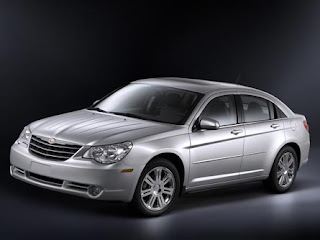 Chrysler Sebring (2007-present)
Chrysler Sebring (2007-present)
This car is not a bad car – for 1999 – but considering what the competition continues to roll out (Hyundai, Honda, Toyota, FoMoCo, GM, Kia, etc.) – it’s an unacceptable effort. Chrysler managers have admitted as much, as evidenced by a leaked memo expressing disappointment in the recent Sebring and Dodge Nitro projects (they might as well include the Jeep Compass in that list as well). The Sebring is a car that sounds pretty good on paper – powerful optional V6, six speed automatic, innovative interior features like heating/cooling cupholders, hard disk music storage, Bluetooth, etc. – all at a reasonable price. But the problem is, those features need to be integrated into an attractive package, which is where the Sebring falls flat on its face. Similar to the Jeep Commander in that it’s a caricature of all recent Chrysler division styling cues, it combines the Crossfire’s hood, the 300’s gun slit windows, and a too-stubby trunk. The result is a chrome plated turd. Even worse, reviewers have called the interior materials “cheap.” Perhaps one problem is that Chrysler admitted benchmarking only domestic models (apparently previous generation ones like the Taurus, Impala, and Malibu) that already were not the head of the class. The car’s handling has also been described as “geriatric.” Time to raise the bar, Chrysler.
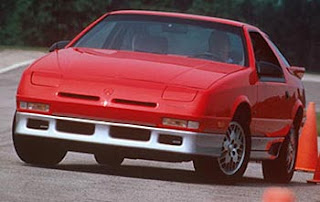 Dodge Daytona (1984-1993)
Dodge Daytona (1984-1993)
This car is what happens when you try to turn the K-car platform into a sporty car. It had the looks (especially for 1984), but had no balls; the base engine was 93 horsepower and the optional engine in the first year was a more respectable 142 horsepower. The Daytona was restyled twice during its front wheel drive lifespan; its original style was a “tribute” to the 1983 Chevy Camaro. The first restyle added hidden headlamps, and if you really squinted hard, looked almost kind of like its namesake 1969 Dodge Charger Daytona (the one that chewed up its NASCAR competition, looks like a Plymouth Super Bee, but is more rare). The last restyle softened some of the hard angles and eliminated the popup headlamps. There is one exception to my panning of this car – the rare 1992 and 1993 Daytona R/Ts with the Spirit R/T’s 224 horsepower turbo/intercooled four. This engine’s heads were developed by Lotus, and it’s the highest horsepower per liter of any engine Chrysler has ever sold to the public. It was the heart of a lion in a body and chassis straight out of the early 80s.There were a few honorable mentions, but I’m getting lazy, so they only get listed:
Dodge Mirada (1980-1982): Batmobile wannabes
Chrysler Cordoba (1975-1983): Chevy Monte Carlo clone, but with “rich Corinthian leather”
Chrysler Aspen (2007-present): who exactly asked for these, other than Chrysler dealers?
Dodge Ram (1972-1993): must have been good to stay in production for 21 years, right? As Autosavant’s Brendan Moore once said, “Dramatically underpowered in base form, wallowing handling, poor interior layout, ugly exterior, terrible brakes, rust-prone everywhere but especially the bed and the fenders, electrical problems, and the list goes on. The toughest part of ‘Ram Tough’ with these trucks was the ownership experience.”
Did I miss any? Did I wrongly throw any good cars under the bus? Any closet Volaré fans? (Doug, if you’re out there, sorry I made fun of your wagon. I know it will be in your museum someday.)




